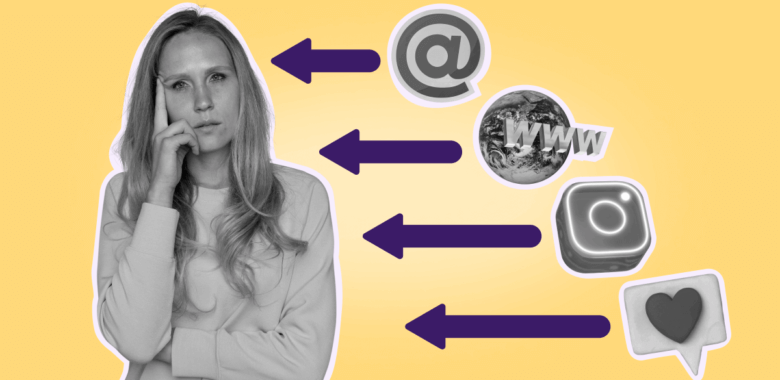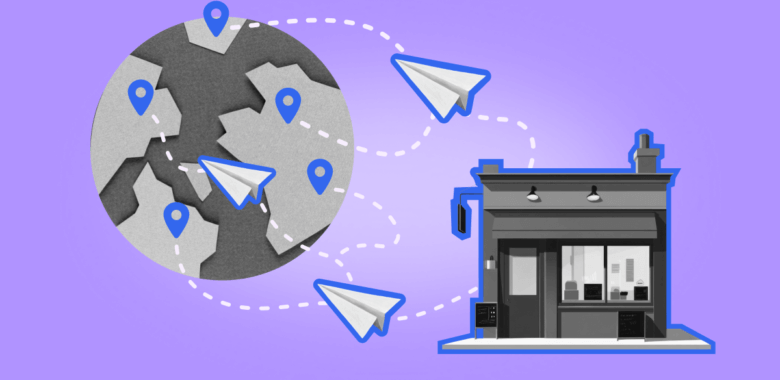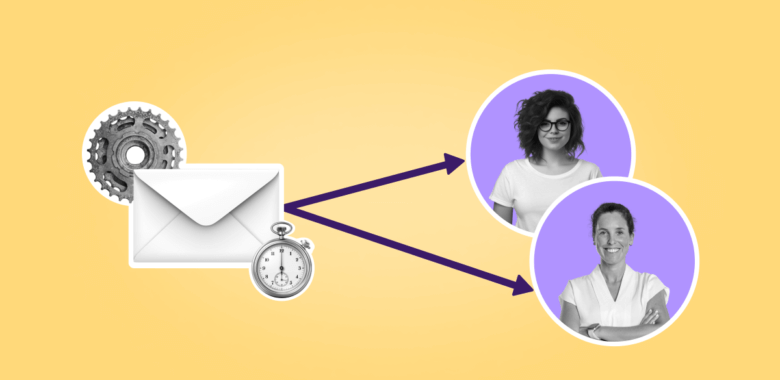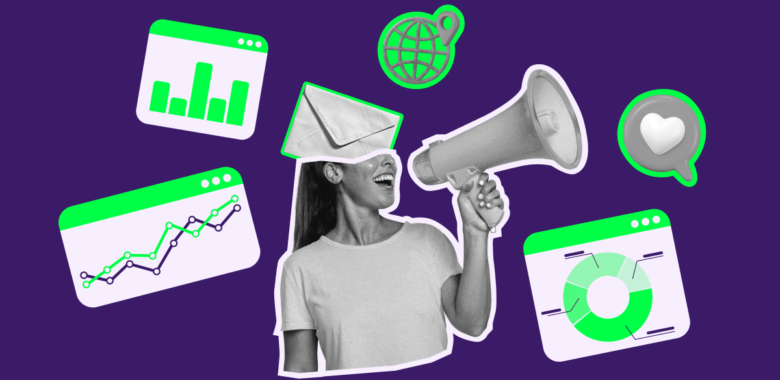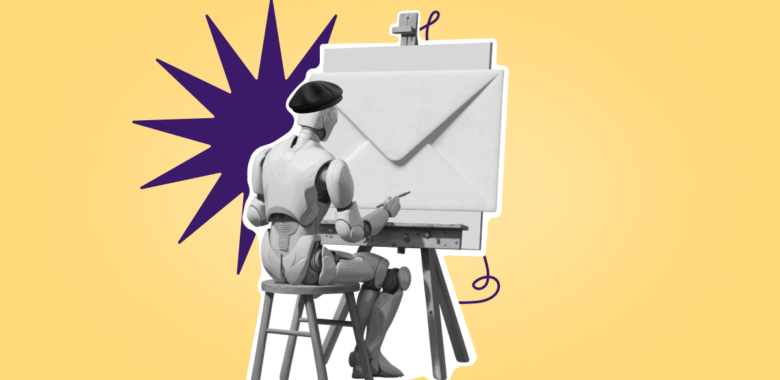Benefits of multichannel marketing
Managing several channels from a bunch of social media accounts to emails, your website, Google Ads, and whatever else sounds like a lot. Especially for small businesses — you’ll need to make so much content. What if you can’t afford hiring a marketing department?! Is it even worth it?
It actually does, so let’s explore the benefits of multichannel marketing.
Increased customer reach
Despite buyer personas being a popular framework for portraying the target audience, your customers are, in fact, not the same person copied and pasted. Not everyone who might purchase from you “lives” on the same platform. So, adopting the multichannel approach gives you more opportunities for customer acquisition.
Let’s say you’re promoting a cosmetics company that mostly targets Gen Z and younger Millennial women. Since you’re targeting Gen Z folks, you might think, “We need a TikTok account,” and you probably do. But not all your potential clientele is on TikTok. Some of them, particularly the older part of your target audience, might stay on Instagram instead. So you also need an Instagram account, at least for cross-posting short videos. Also, you still need a website so customers can easily buy stuff from you online. That’s multichannel marketing!
Enhanced data collection
These days, data is the most valuable thing a marketer can have — and here’s how multichannel marketing can help you with that:
- More data from more platforms. If you only have an online store, for example, you only have the customer data that describes how people interact with this store specifically. But if you add a promotional newsletter, you can notice that in emails, people react better to certain CTAs. You implement these CTAs on the website, and boom, more conversions to purchases! You wouldn’t have a chance to know it if you didn’t add another channel to the picture.
- More nuanced data. If you have only an Instagram account, your testing and experimenting opportunities are limited by the platform itself and its specifics. You can’t really run A/B tests on social media (unless it’s paid ads, but it’s different), and Instagram doesn’t allow you to check if your audience responds well to longreads or game mechanics. Meanwhile, more channels mean more available types of content, mechanics, and testing opportunities. That way, you have a larger content toolbox to test on your audience and make more informed decisions in the future.
- Cleaner data. Social media algorithms work against you — for example, the average engagement rate of a Reels video is 0.5% so far. This and other factors mess up with your engagement metrics, so you might not even know that something actually works. Meanwhile, if you have several channels, some of which are less affected by these external factors, you’ll get a much clearer picture of how people interact with your content and what they actually like.
Improved customer experience
Unlike omnichannel marketing, the multichannel approach is not that focused on creating a seamless experience for customers — however, several channels instead of one still can make it better.
As we mentioned earlier, not everyone from your target segment spends their time on the same platforms. Your audience wouldn’t want to leave their preferred channel just to follow your “business” account.
The same goes for purchasing behavior. If people have to break their habits just to buy from you, it might alienate customers at the consideration stage. But if you provide several options, it will improve customer experience — and get you more revenue.
More conversions
We already mentioned that not all channels are equal — take the incredibly low engagement rates on algorithmic social media platforms like Instagram. So, putting all your resources into this platform when email marketing with an average click rate of 2% exists is, to put it lightly, not smart.
Some channels work more on acquisition, while others work on retention and repeat purchases. With multichannel marketing, you can build an effective media funnel that will help you recruit new customers and retain old ones. So, you’ll get more conversions into purchases. Once you’ve attracted new people with one channel, you push them further down the funnel and make them stay and continue the interaction via other channels. Compare that to the situation when you’re really good at hacking Instagram algorithms and have made a couple of viral videos, but the audience has no reason to stay, so your sales don’t really go up.
Better ROI
Last but not least, if you don’t put all your eggs in one basket, you’ll get a better return on investment. Here’s why diversification works when it comes to multichannel marketing:
- Risk management. One of your channels failed to take off? If it’s your only channel, you’re doomed. If it’s not, you can relocate your resources to the channels that give more revenue. In the end, you’re decreasing the risk of going into the negatives.
- More conversions. As we mentioned, multichannel marketing increases your sales, which means a higher marketing payoff.
- A higher resilience. Most available marketing channels, if not all of them, are vulnerable to tons of factors simply because the platform itself doesn’t belong to you. SEO algorithms change, social media algorithms (and owners) change, banner blindness is real, and so on. So, it’s natural that your marketing ROI may fluctuate — but it’s not going to fluctuate too much if your investments are distributed across several platforms.
